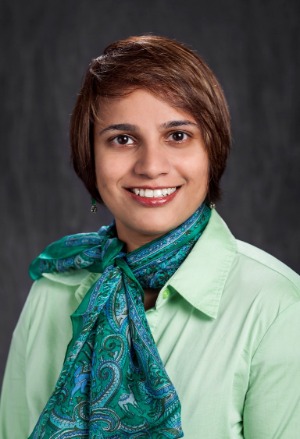DOE announces funding for LSU-Penn State research project on better materials and chemistry through data science

BATON ROUGE — A collaborative, multi-disciplinary research project between LSU and Penn State is one of only 10 projects to receive funding from the U.S. Department of Energy for data science projects aimed at advancing chemical and materials sciences.
The research group, led by Penn State’s Associate Professor of Chemical Engineering—and adjunct faculty member in the LSU Chemical Engineering Department—Christopher Arges, also includes the College of Science’s Associate Professor of Chemistry Revati Kumar and College of Engineering’s Jose Romagnoli.
“Data science, and especially AI/ML, provides unique opportunities to leapfrog to novel capabilities for understanding fundamental properties and processes in physical and chemical systems,” said Steve Binkley, Acting Director of DOE’s Office of Science, in a released statement. “This research will take advantage of the rapid growth of AI/ML to accelerate the discoveries needed for more efficient energy generation, storage, and use, while eliminating or reducing the emission of greenhouse gases and the use of critical resources.”
The three-year, $1.5 million project, “Bridging the length scales in ionic separations via data driven machine learning,” involves devising a machine learning framework, which uses data derived from both experiments and computations, targeted at developing next generation materials for selective and energy efficient separations technologies.
The science of electrochemical ionic separations is an area of research that is driven by applications ranging from the removal of pollutants in ground water treatment to the recovery of nutrients from wastewater. The ability to remove specific ions selectively from solutions in an energy efficient manner is the ultimate goal, according to Kumar.
“These machine learning algorithms are trained on large data sets and uncover insights and trends leading to predictive ability for—in this case—guiding materials discovery and separation platform efficiency without a prior knowledge of the relationships in the system under study,” Kumar said.
The project is divided into three parts: The experimental component, simulations to gain insight into the molecular level aspects of the materials, and the incorporation of the data into the machine learning algorithm framework. Arges will work on the experimental side, while Ramognoli's group is an expert in machine learning algorithms.
Kumar, whose research uses computational investigations to study complex chemical systems at the molecular level, will be simulating these systems at the molecular level.
“The molecular-level properties of materials play a central role in selective separations,” she said. “However, the relationship between molecular design and interactions to ionic separations remains to be established.
“In order to address this, my group will perform simulations on polymeric ion exchange materials to gain nanoscopic insight into these materials. The data from these investigations will be part of the machine learning framework that we are developing with the groups of Professors Romagnoli and Arges.”
For more information on Kumar’s work, visit the Kumar group webpage.
For more information on the project, visit the Office of Research & Economic Development webpage.